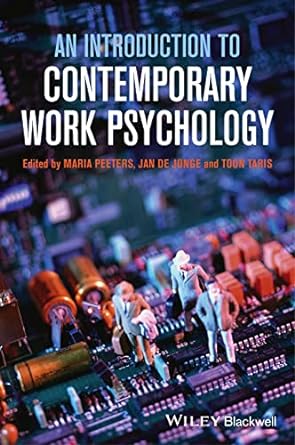The time-and-motion studies conducted by Frank and Lillian Gilbreth aimed to reduce the steps needed to conduct
Question:
The time-and-motion studies conducted by Frank and Lillian Gilbreth aimed to reduce the steps needed to conduct a particular task. In this way they could improve the efficiency of workers and reduce the effort needed to perform their tasks. The principles behind this approach can also be applied to other contexts in which people conduct particular tasks. Consider the task of preparing a meal, eating it and cleaning up afterwards, with subtasks such as (i) take ingredients from the refrigerator, (ii) cook the meal,
(iii) put the dishes on the table, (iv) dispose of the waste (empty packages),
(v) clean the dishes in the dishwasher and (vi) put the clean dishes in a cupboard. Assume that all these activities are done within your own (large)
kitchen. What would the layout of your kitchen look like if you organized your activities according to the principles of Lillian Gilbreth? Where would you put the refrigerator, cupboard, dishwasher, etc. if you wanted to minimize the effort needed to prepare your meal, eat it and clean up afterwards?
Step by Step Answer:

An Introduction To Contemporary Work Psychology
ISBN: 173612
1st Edition
Authors: Maria Peeters, Jan De Jonge, Toon Taris






